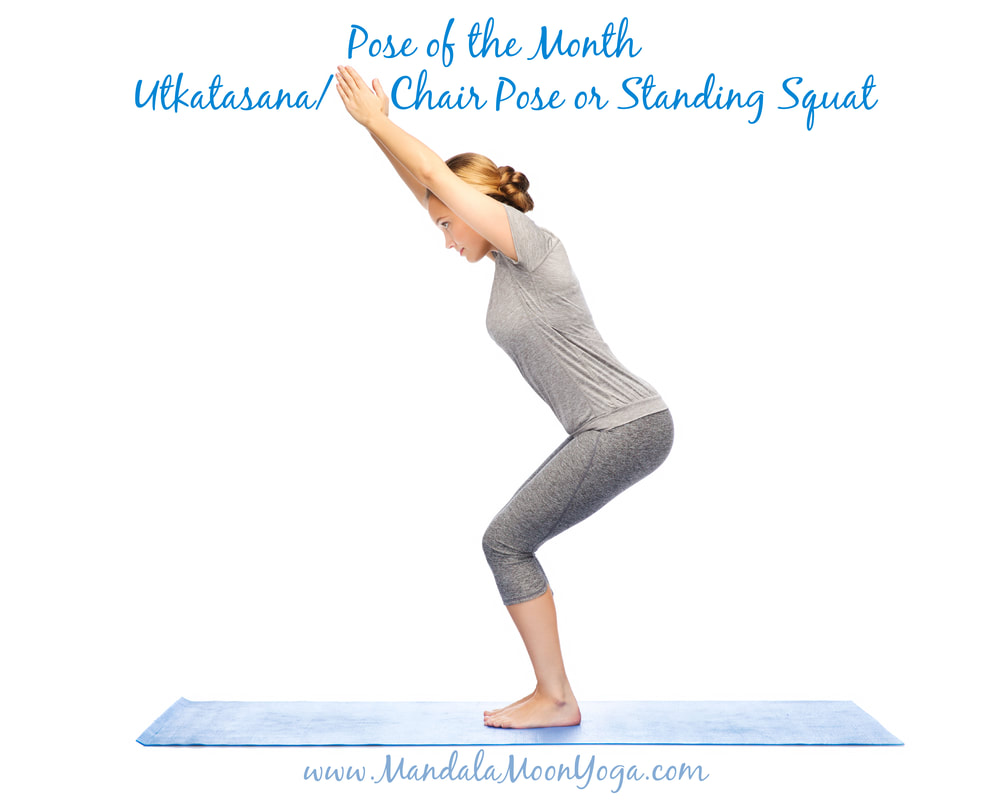Sanskrit:
Utkata = Fierce, Powerful, Intense; Asana = Pose
(OOT-kah-TAH-sah-nah)
Benefits/Purpose:
This pose strengthens the core, thighs, and ankles. It helps develop and improve concentration, balance, and resilience. Teachers will often cue you to sit back into an “imaginary chair.” As you bend your knees into this standing squat position, you will begin to feel the heat quickly, especially in the quadricep muscles.
Precautions:
As always, check with your healthcare provider before beginning any physical practice. If you have heart disease or high blood pressure or if you are struggling to balance, avoid long holds in this pose. If your knees are weak or you have any recent or chronic injuries or pain in the knees, hips, or legs, you may want to avoid the posture.
How to Practice:
- Stand in Tadasana with your arms by your sides.
- Raise your arms in front of you at shoulder height, palms facing in or down.
- Reach out through your fingertips and draw shoulders back and down.
- Bend knees to lower your hips and allow your back to arch gently while keeping waist long. If you feel any compression in your low back, curl your tailbone down until the discomfort is gone.
- Lower your hips to work your quads and stretch your hamstrings. Lift your hips if you feel discomfort in your knees.
- Maintain the arch in your spine.
- To release, press down through your feet and rise to standing. Lower your arms to your side.
- Keep the hands on the waist.
- Arms lifted outside the ears or arms overhead with palms together.
- Hands at the heart in Anjali Mudra (prayer position_
- Lift heels for balance challenge.
- Lean buttocks against a wall.
- Inhale a few inches out of the squat, exhale deeper into the squat.
- Block between the thighs to help engage adductors.


 RSS Feed
RSS Feed